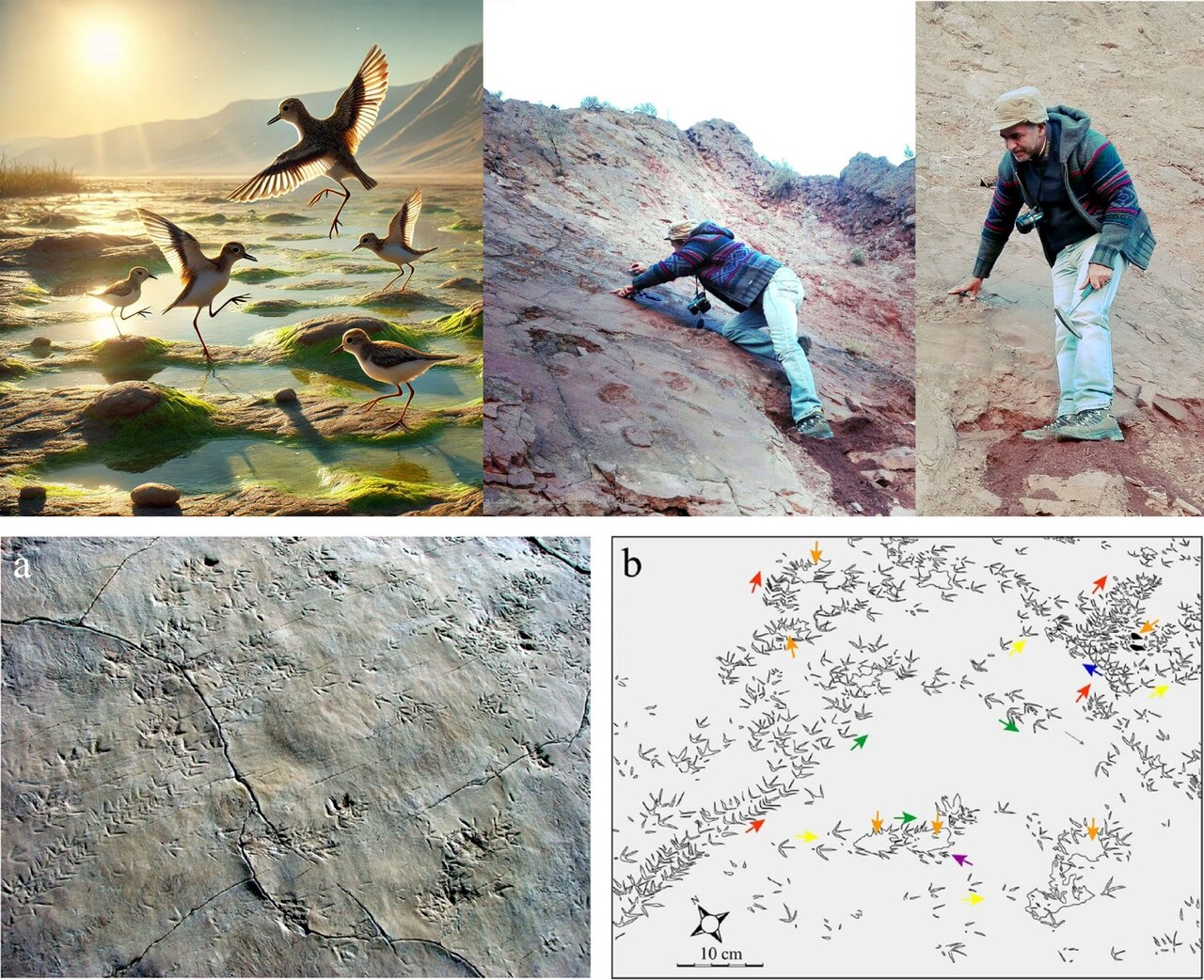Iranian paleontologist unveils world’s first fossilized bird mating dance in Miocene strata

TEHRAN - In a groundbreaking paleontological discovery, Iranian scientist Dr. Nasrollah Abbassi, researcher at the University of Zanjan, has uncovered the world’s first fossilized evidence of an ancient bird mating ritual—captured in stunning detail in the Miocene Upper Red Formation of northwestern Iran.
This unprecedented find sheds light on avian behavior dating back 13–15 million years and marks a major milestone in behavioral paleontology.
Unlike typical trace fossils that preserve isolated footprints, this exceptional site features more than 70 extraordinary trackways etched on the sedimentary slab, forming an intricate tableau of ritualized avian display.
These tracks document a dynamic sequence of movements—walking, high-stepping, stomping, hopping, pecking, short flights, and lateral leaps—suggesting a complex mating dance akin to those seen in modern shorebirds.
“This discovery transcends bones—it immortalizes behavior,” said Abbasi in an exclusive interview. “What we have here is not just locomotion; it’s performance. Imagine Miocene male birds stepping proudly across ancient mudflats, stamping their feet, leaping sideways, fluttering briefly into the air, and pecking with precision—all in a coordinated effort to attract a mate.”
Detailed morphometric analysis of footprints indicates the birds weighed approximately 320 grams with hip heights of around 6 centimeters, aligning closely with modern-day plovers (family Charadriidae). The strong behavioral parallels prompted Abbassi and his team to coin a new ethological class in trace fossils—Goshnichnia—dedicated specifically to trace fossils of mating rituals.
“This is the oldest direct evidence of complex courtship behavior ever recorded in birds,” Dr. Abbassi emphasized. “It opens a new chapter in our understanding of how behaviors—especially social and reproductive ones—can fossilize. Until now, such intricate displays were considered nearly impossible to detect in the rock record.”
The find is a forward step in paleontology by the role of ichnology—the study of trace fossils—. Where fossils once spoke primarily of anatomy, now they narrate social interaction, communication, and even courtship. The ability to read behavioral choreography in stone offers scientists an entirely new lens for interpreting ancient life.
“The beauty of this site lies in its completeness,” Abbassi explained. “We’re not seeing a single footprint or a random series of steps. We’re witnessing the choreography of a species—its ritual, its rhythm, its intention—all preserved across millions of years. It’s as if time paused during a dance.”
Beyond its scientific importance, the discovery places Iran’s Upper Red Formation firmly on the global paleontological map in the terrestrial territories. The richly layered deposits of the region, long studied for their sedimentary significance, now stand as a vital archive of behavioral evolution.
“This find validates Iran’s place at the forefront of ichnological research,” Abbassi said. “It demonstrates that we don’t have to look to other continents to understand the early behavioral evolution of birds. The record is here—in our mountains, in our rocks, under our feet.”
Dr. Abbassi, a leading figure in ichnology and geobiology, holds a Ph.D. in Geology with a specialization in Paleontology from Shahid Beheshti University of Tehran. Over the past decade, he has spearheaded pioneering research into sedimentary structures and trace fossils throughout Iran. His work continues to redefine what is possible in the field of fossilized behavior, “ichnology”.
“This is only the beginning,” he concluded. “If we can discover a mating dance preserved in stone, imagine what else may be waiting—other behaviors, other species, other stories. The earth remembers more than we thought.”
In 2022, Abbassi authored Miocene Wildlife of Zanjan, Northwest Iran, a comprehensive volume published by the University of Zanjan. The book documents the region’s rich fossil heritage and serves as a foundational reference for researchers studying Miocene Series/Epoch ecosystems in the Middle East.
AM
Leave a Comment